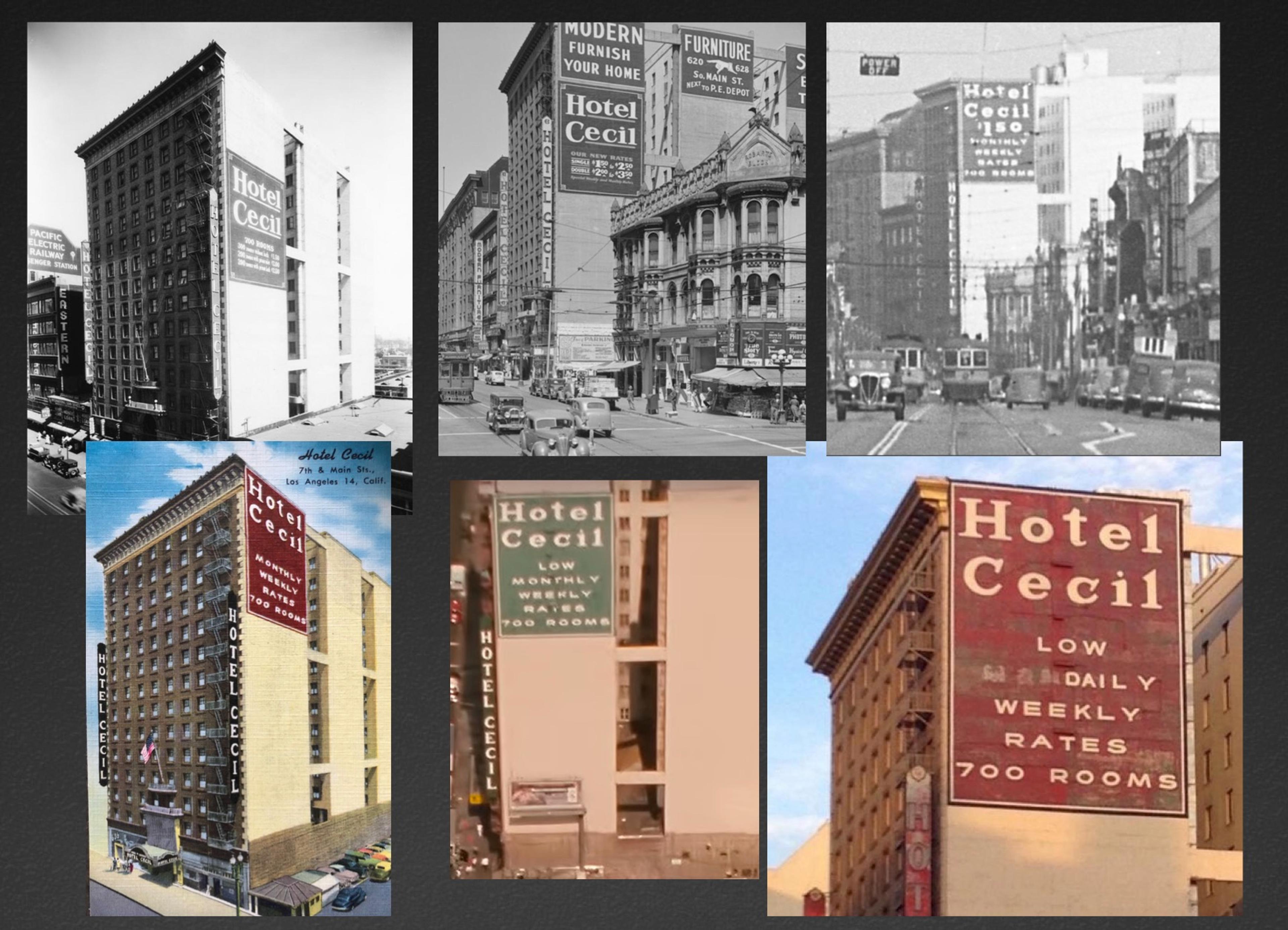No, I’m not talking about Pigeon Goldie walking the halls. Rather, I speak of the ghost sign on the Cecil’s south wall.
Which, to be correct, is not truly a ghost sign, as it _still_ advertises the famed, magnificent Hotel Cecil.
It is the grandest of our great painted palimpsests, originally added to the wall in 1924, then about 1940 repainted higher, in a bit different configuration—a downtown touchstone ever since.
Easter weekend, though, its lessee decided that space was better suited for, what, giant GTA ads in the manner of the Figueroa…
…trouble being, no. No, when you enter into a legal contract with the City of Los Angeles to be subsidized in your restoration efforts, you’re not allowed, legally, to go about effing the place up.
Find out all about it here:
The Cranky Preservationist in Hotel Cecil Whitewash Blues (episode 28)
About Nathan Marsak
NATHAN MARSAK says: “I came to praise Los Angeles, not to bury her. And yet developers, City Hall and social reformers work in concert to effect wholesale demolition, removing the human scale of my town, tossing its charm into a landfill. The least I can do is memorialize in real time those places worth noting, as they slide inexorably into memory. In college I studied under Banham. I learned to love Los Angeles via Reyner’s teachings (and came to abjure Mike Davis and his lurid, fanciful, laughably-researched assertions). In grad school I focused on visionary urbanism and technological utopianism—so while some may find the premise of preserving communities so much ill-considered reactionary twaddle, at least I have a background in the other side. Anyway, I moved to Los Angeles, and began to document. I drove about shooting neon signs. I put endless miles across the Plains of Id on the old Packard as part of the 1947project; when Kim Cooper blogged about some bad lunch meat in Compton, I drove down to there to check on the scene of the crime (never via freeway—you can’t really learn Los Angeles unless you study her from the surface streets). But in short order one landmark after another disappeared. Few demolitions are as contentious or high profile as the Ambassador or Parker Center; rather, it is all the little houses and commercial buildings the social engineers are desperate to destroy in the name of the Greater Good. The fabric of our city is woven together by communities and neighborhoods who no longer have a say in their zoning or planning so it’s important to shine a light on these vanishing treasures, now, before the remarkable character of our city is wiped away like a stain from a countertop. (But Nathan, you say, it’s just this one house—no, it isn’t. Principiis obsta, finem respice.) And who knows, one might even be saved. Excelsior!””
Nathan’s blogs are: Bunker Hill Los Angeles, RIP Los Angeles & On Bunker Hill.
